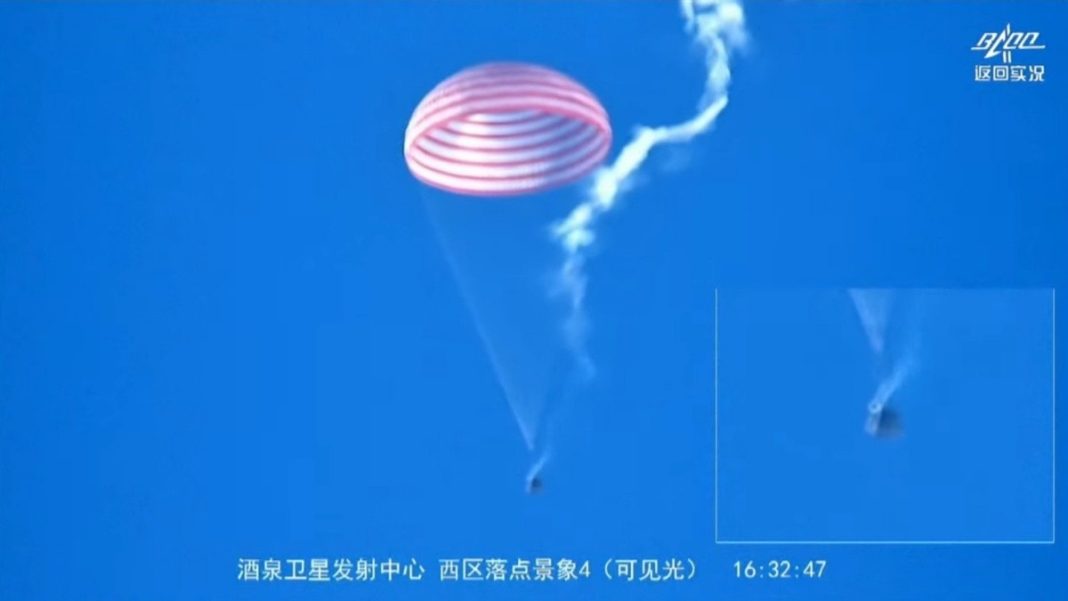Key Takeaways
- Chinese astronauts safely returned to Earth using backup spacecraft after debris damaged their original capsule
- The Shenzhou-20 mission marked China’s first return delay due to space debris damage
- The crew landed safely on November 13, 2025, after switching to Shenzhou-21
Three Chinese astronauts have made a safe return to Earth after their original spacecraft was damaged by space debris, forcing an unprecedented mission extension and spacecraft swap. The Shenzhou-20 crew successfully landed using the backup Shenzhou-21 capsule on November 13, 2025, following a week-long delay for safety assessments.
Unprecedented Debris Incident
The mission faced an unexpected challenge when the Shenzhou-20 return capsule developed a minor crack, likely caused by orbital debris. Originally scheduled to land on November 5, 2025, the crew’s return was postponed while the China Manned Space Agency (CMSA) conducted detailed impact analysis and risk assessment.
Engineers determined the damaged return module was unsafe for reentry. To ensure astronaut safety, the crew switched to the docked Shenzhou-21 spacecraft for their journey home. This marked the first time a Shenzhou mission’s return was delayed due to debris damage.
Mission Continuity Maintained
The three-person crew, including mission commander Senior Colonel Chen Dong, remained aboard the Tiangong space station during the assessment period. They continued joint scientific experiments with their relief crew on Shenzhou-21, which had arrived in late October.
Shenzhou-21’s return capsule functioned as the crew’s lifeboat, enabling safe Earth reentry within the designated landing window. Despite the disruption, Chinese space officials emphasized that all life support systems aboard Tiangong functioned normally and the crew remained safe throughout the process.
Growing Space Debris Threat
The incident highlights the persistent hazard of space debris, which ranges from paint flecks to defunct satellite fragments traveling at extremely high speeds. Even millimeter-sized debris can puncture spacecraft, necessitating updated safety protocols, improved debris tracking, and international cooperation to safeguard astronauts.
Meanwhile, CMSA plans to launch an uncrewed Shenzhou-22 mission soon to deliver additional cargo and supplies to Tiangong, supporting ongoing station operations. The successful return aboard Shenzhou-21 reaffirmed China’s commitment to maintaining a continuous human presence in orbit while managing emerging challenges of increasing space congestion.




